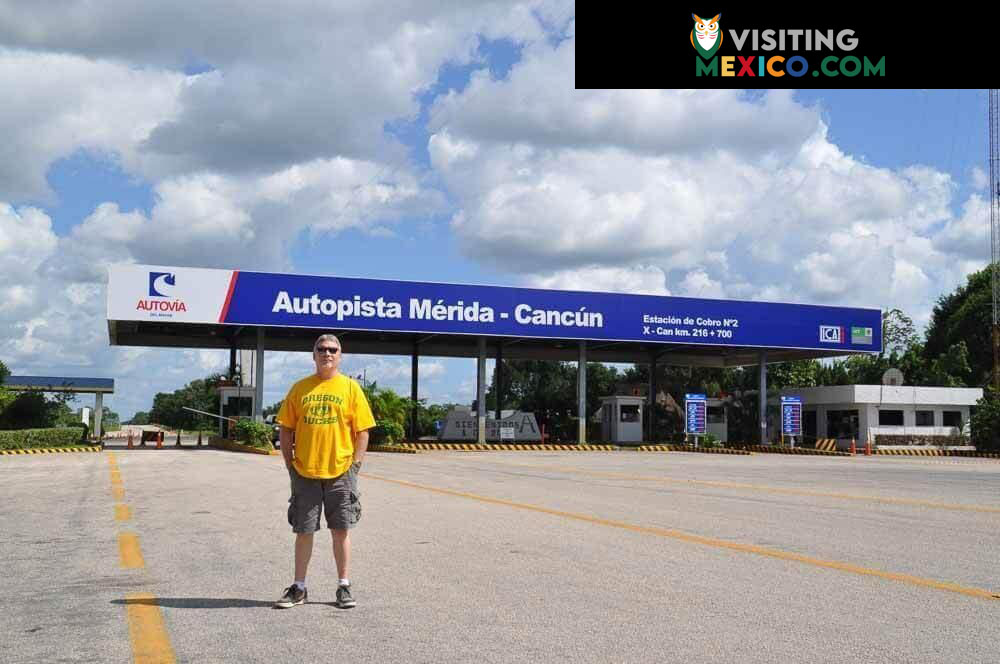Toll Roads in Mexico
City in Mexico
If you are new to driving in Mexico, you may not be aware of the huge change the advent of toll roads in Mexico made to driving tourism. I was driving around before there were toll roads, and am still around. A lot of old-timers and I have mixed emotions about the toll roads. Sometimes driving them makes it easy to miss the scenic attractions. It’s like driving across the USA. Route 66 and I-44 both get you there. Combining the two will enrich your life. Toll roads or “autopistas” cover Mexico in a vast network. This extensive network includes freeways and highways that accept payment to use. There are state toll roads along with national ones. Tourists to Mexico use Mexican toll roads whenever possible as they remain the safest and fastest routes between destinations. Free roads may not impose a fee but often, these are skinny, unmaintained roads.

The History of Toll Roads in Mexico
The boom in Mexico’s toll road construction was from 1989-1994. Fifty-two concessions were awarded to private contractors to build new roads covering about 5,000 kilometers throughout Mexico. To finance these ventures, 50% was put up by private banks, the concessionaires supplied 30% through high-interest commercial loans that increased in interest rate as they were based on a floating rate. Another way they could finance their share was to have part of the work done by, say, a paving company, which deferred payment and was supposed to be paid from the revenues.
20% was supplied by the public sector through grants or other means. This convoluted system was one of the main reasons that the program was such a failure that it is used in textbooks to demonstrate how not to fund large-scale public/private projects. Cost overruns were epidemic. The Cuernavaca-Acapulco road (which was designed by an engineer in a wheelchair) is a marvel of engineering that is amazing to this day. Unfortunately, it cost 200% more than estimated. Most other toll road projects over-ran their projected costs by a “mere” 30% to 50%. One reason the scheme did not work was the tolls were exorbitant. The Cuernavaca-Acapulco toll road was reputed to be the most expensive in the world (though that is hearsay – I have never found an authoritative comparison). Nevertheless, I drove it soon after completion, and it was certainly the most expensive in Mexico. I recall the toll being USD $100 or USD $120) – about the same as a flight from < style=”color: #244b8c;”a href=”https://visitingmexico.com/mexico-city/”>Mexico City to Acapulco. If you think tolls are high now, imagine them 40% higher in two-decade-old dollars.
Toll Roads in Mexico: Economic Factors
The peso declined all of 1994. Inflation was rampant. In Dec. 1994, the government devalued the peso. By the end of the month, it was worth 66% less than at the beginning. Inflation would eventually run from 52% to 71% in 1995. The toll road operators were stuck. They owed a debt that was more expensive every day due to the variable rate and a declining peso. So what did they do? They raised their tolls. That depressed traffic even more. (BTW, my experience is that Mexican hotels did / usually do the same thing. When business is bad, they raise their rates). When the plan fell apart, the government took over the roads and lowered the tolls. Today most of the toll roads are government-owned, either by federal or state governments. The federal agency is official, Caminos y Puentes Federales de Ingresos y Servicios Conexos (CAPUFE) a division of SCT. History gives one perspective. The biggest opponents of the toll roads in the 1990s were RV’ers. Part of the reason was that they were charged a different rate at one toll booth than the next one. There was no consistency. Today, the biggest proponents of the toll roads are the RV’ers. Rates are generally consistent, and driving is a lot easier for them. Mexican toll roads are built to international standards. AAA consulted with the Mexican government when the structures were planned. Like toll roads in the U.S., you pay to drive on them. The fee covers the cost of maintenance and security (lighting, painted lanes, etc.). In 2020 drivers in Mexico expect to pay under $4.00 You can pay the toll with US currency.
Toll Roads in Mexico: the Benefits
When you drive a Mexican toll road, they provide you with a toll receipt. Your paid toll includes limited insurance (liability and minor medical payments and supposedly protection from paying for damage to the roadway if you have an accident or if your vehicle is damaged because of a defect in the road. I totaled an SUV on a toll road, and I (or my Mexican Car Insurance company) had to pay for the damage my truck inflicted on their precious highway, so I dispute that benefit.
While many toll booths take credit cards, be advised that when you use a credit card, you don’t get insurance. This is not a big deal because you already have MexInsurance for your ride. The other thing to note is that if you use your credit card, it may get cut off. I know this, as I know most things, by experience. When your credit card company sees a series of $5.92, $11.12, $3.96 charges, some of them assume fraud. This can be very inconvenient when you are desperately low on funds and hundreds of miles from home. So talk to a person at your credit card company before you leave. You can pay in US dollars – at toll booths close to the border. Once you get a state away from the border, fuggedaboutit it. Get pesos. Another benefit to driving the Mexican toll roads is that ‘Green Angels’ patrol them. The Mexican Tourism Ministry provides the Green Angels. They help motorists experiencing car trouble or a breakdown while driving the toll roads. The Green Angels operate throughout the country daily and have bilingual crews working to keep people safe and visible. These crews have mechanical and first aid training. If they cannot fix a problem, they quickly line up towing for motorists. Moreover, their services are free unless breakdown results from running out of gas, in which case they will charge.
Toll Road Conditions
Mexico’s toll roads are usually in excellent condition. However, it’s still important to understand that weather can wreak havoc on road structures. A coastal road in Rosarito, in Baja California, slid down the mountain in 2016 after heavy rain. For this reason, it’s always a good idea to make a travel itinerary before heading into Mexico and checking reports for the roads you plan to travel to. You can visit the website of Mexico’s Secretary of Transportation and Communication here in order to find out more information about checking Mexico’s toll roads.
Mexico Toll Roads: More…
There is a website with many tolls and mileage. I think it is a great step forward to facilitate driving tourism, and I applaud SCT for putting it up. Note: the route planner will always take you on a toll road, even if a free road is shorter. Should you always take the toll roads? Only if you want to miss the adventure of traveling through more scenic Mexico. Are the toll roads “safer?” Yes, in the sense that driving is easier, and there are fewer unpleasant “surprises” like potholes, shoulder drop-offs, and rocks on the road. Are they “safer” in terms of personal safety? I drive both. I think not. Both roads are perfectly safe (except for a few trouble spots like Michoacán state). I suggest you plan your trip with a map or a good website that will tell you some of the interesting side trips that will make your journey one of discovery, rather than superhighway driving, where the only difference between there and home is the road signs. Don’t be afraid to exit and get away from the rat race. After all, isn’t that why you came to Mexico?


